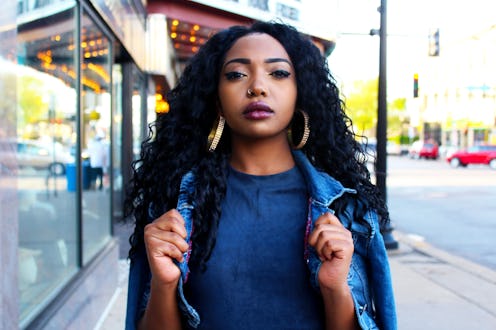Life
The Gender Pay Gap Is Even Worse Than We Thought For These Female Creatives
It's not so long ago that women in the U.S. weren't allowed to get a credit card without their spouse or male relative's approval. Since then, conversations about women and finance have moved forward considerably (though there's still a cultural tendency to depict women as spendthrifts), and millennials are entering a world in which, on paper, money should be egalitarian. But many women know that this is hardly the case in practice.
Two new studies reveal that when it comes to our generation, women still don't have as much financial freedom as men, whether because of the gender pay gap, debt control, or their job happiness, and that is especially the case if they freelance. An analysis by the business management platform Honeybook looked at gender disparities in the income of their 50,000 self-employed clients, while the Wells Fargo 2017 Millennial Survey, interviewed 1771 millennials, all U.S. citizens between 20 and 36, 59 percent of whom were female. When looked at together, these statistics reveal that while women have more financial power than at any other point in history (at least in the U.S.), they still are stuck behind on key money-related factors that will hold them back for generations to come.
Financial Equality Is Far Off — Especially If You Freelance
Being self-employed as a millennial woman is not exactly an area of great financial equality. HoneyBook's survey of its 50,000 clients, all of whom are self-employed, discovered that women averaged $29,830 income, while men averaged $43,643 — a 32 percent income difference. And these are the people doing well enough to use a bespoke creative industry consultancy. It's often argued that part of the problem with gender pay gaps is that women are more inclined towards part-time work, but these statistics don't back that up. For one, the Bureau of Labor Statistics notes that men are more likely to be self-employed than women; 12.3 percent of men in the U.S. were self-employed in 2015, compared to 7.5 percent of women. For another, HoneyBook's analysis demonstrates that in the same industries, women are being paid substantially less for freelance or creative work. Female photographers were paid 59.56 percent less, female cinematographers over 87 percent less, and female event planners almost 76 percent less.
"It’s clear that wage gaps continue to hold women back from nearly every industry, but very little information was publicly available about the creative economy," HoneyBook co-founder Shadiah Sigala tells Bustle. "With a community of 85 percent female-owned businesses, we want to understand how this wage gap impacts women and men to empower our community to buoy the creative economy."
While HoneyBook's work examined a vast range of clients, many of whom aren't millennials, this sort of data is really important for our generation, which often idealizes working for yourself. A whopping 67 percent of all millennials want to be self-employed some day, but only 2 percent of us qualified in 2014, likely because of the financial risks involved and the high debt levels of this generation.
The Wells Fargo study shows that millennial women, freelance or not, are earning less than millennial men. The median income of the women they interviewed was $43,000, while for men it was $63,000. Only 51 percent of women thought they were saving enough for future needs versus 68 percent of men, only 62 percent felt in control of their financial lives (versus 78 percent of men), and only 50 percent thought they were saving enough for retirement (versus 68 percent of men). More women than men said they had a "significant amount" of debt, couldn't afford to pay for their healthcare, and were underemployed in their current work. And 72 percent of women were happy to go to work every day, versus 77 percent of men.
How Can We Solve The Freelance Gender Gap?
Self-employed women are seriously disadvantaged in comparative earnings; HoneyBook tracked gender disparities state by state, and found that self-employed women in Virginia make only 75 cents to the dollar versus male earnings, while Texan women only earn 82 cents to the dollar. With that disparity in place, attempts at savings are already handicapped.
Data on freelance work can be difficult to get, so this study is a valuable, although distressing, insight. Sigala points out that the HoneyBook study found "just how significant the pay gap was on a platform and creative economy with a female majority": in some places, it uncovered a pay gap of 68 cents to the dollar. That, she says, "is even higher than that of the finance and insurance industries, which represent the largest pay gap of any industry at 71 cents to the dollar." And the problem is compounded by the fact that women who freelance don't have an employer to help contribute to a 401(k) or retirement, meaning that they're in desperate need of higher levels of financial education and support to make up for it.
Freelancing women also face issues that haunt the finances of all millennial female earners: low proportions of savings (the Wells Fargo study found that women earning $88k per year only saved $675 per month, compared to $1k for men), and high student loan debt (women are holding around 67 percent of it in the U.S.). And it adds up. Millennial women have been found to have half the 401(k) savings of their male counterparts.
So what can you do? If you're a freelancer, Sigala says, do more comparison about your prices. "Female creatives need to charge more for their services," she says. If you're a millennial woman in a non-creative industry, be aware of your financial situation, get yourself some financial education, talk to your bank and your employer, and don't go self-employed unless you're willing to combat serious gender bias.
